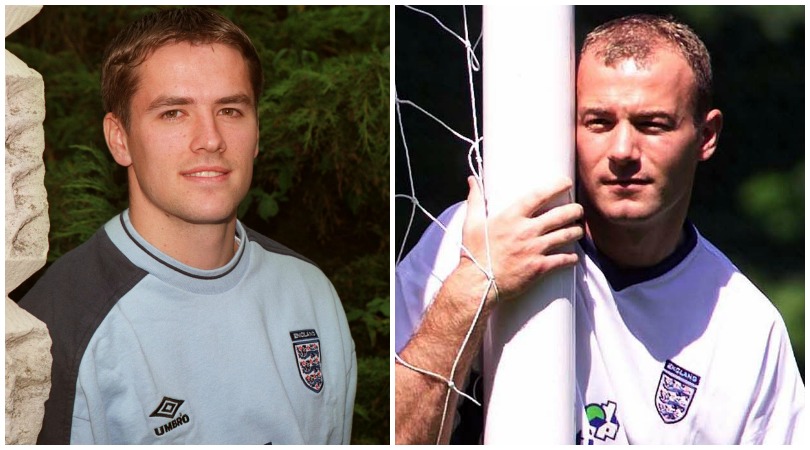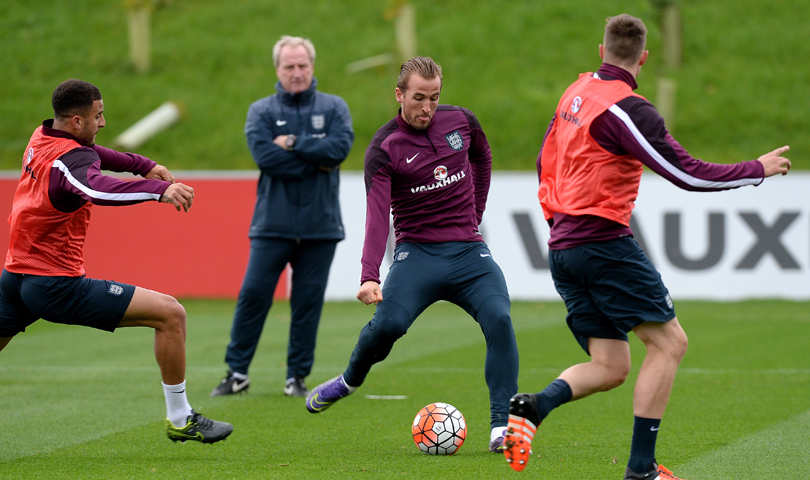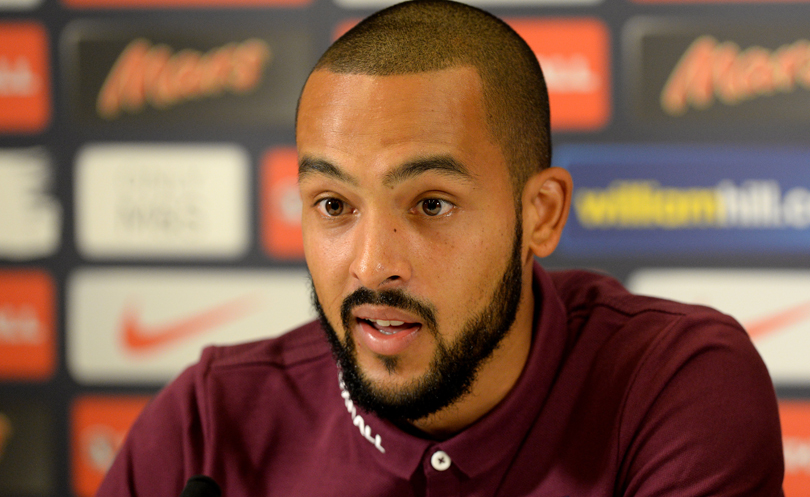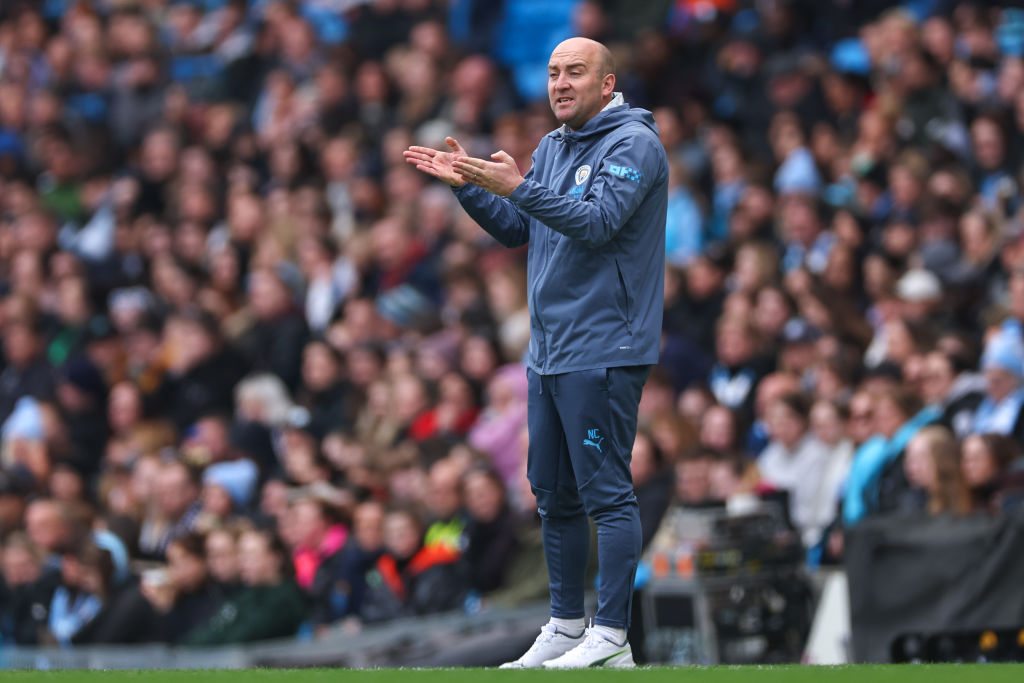Why England's striking options are the best since Euro 2000
Wayne Rooney sidelined, and out of form anyway? No bother, says Paul Wilkes – Hodgson can't fit Sturridge and Welbeck in when they return...

Wayne Rooney surpassing Sir Bobby Charlton's England goalscoring record last month reignited the debate about the country’s greatest-ever striker. Our small island has produced a number of prolific finishers in the past, with Sir Geoff Hurst, Gary Lineker, Jimmy Greaves, Michael Owen and Alan Shearer all having netted over 30 goals for the national side.
Hopes have rested upon these players at various times over the past half-century; Hurst's hat-trick in 1966 has maybe conditioned us into believing it's the best approach. We aren't alone, however, and every country has a tendency to hope for a world-class striker to emerge (here's looking at you, Portugal). The Brazilians are always looking for the next Pele or Ronaldo – hence why Neymar receives such adulation – while Argentina found their new Diego Maradona in Lionel Messi.

The problem with this way of thinking is that it means you can just be one metatarsal injury away from disaster. International football has changed – perhaps it's no longer the ultimate barometer of success on a personal level. The need for one top-level striker is now reduced: it's more important to have players who suit the manager's system and can work cohesively with their team-mates. It doesn’t have to be the striker who scores the goals, so long as the side is capable of obtaining them from other positions.
Germany's World Cup-winning squad of 2014 contained just two forwards: Lukas Podolski, who'd spent the season out wide for Arsenal, and 36-year-old Miroslav Klose. The Spain squad that defended the European Championship in 2012 only had three in Fernando Llorente, Alvaro Negredo and a waning Fernando Torres.
Spirit of 2000
For the last 15 years, the Three Lions have had little strength in depth in forward areas
It is, of course, better to have a number of forward options rather than very few, especially when you consider that Germany and Spain's prosperity was down to their amazing wealth of midfielders, which England don't currently possess. For the last 15 years, the Three Lions have had little strength in depth in forward areas, with the responsibilities resting firmly at the feet of Rooney and Owen (although Peter Crouch did exceed expectations).
In 2000, Kevin Keegan chose five strikers for the European Championship in Belgium and the Netherlands. Shearer and 20-year-old Owen were joined by Emile Heskey, Kevin Phillips (30 Premier League goals in 1999/00) and Robbie Fowler, while Andy Cole had missed out through injury.
Get FourFourTwo Newsletter
The best features, fun and footballing quizzes, straight to your inbox every week.

The different attributes of those attackers meant there were plenty of choices against varying opposition, but like most managers Keegan opted for his preferred partnership and one back-up. Phillips and Fowler never made it onto the pitch as England were eliminated in the group stage, although it wasn’t a lack of goals that cost Keegan’s men – they conceded six against Portugal and Romania combined.
Roy's choices
With next year’s Euros only eight months away, Roy Hodgson has the highest number of quality strikers at his disposal since Keegan was in charge. The former Liverpool and West Brom coach is a lot more conservative than the gung-ho Toon Army custodian, but he will surely benefit from the rich assortment.
I think our choice is enormously different to 2012, put it that way
Hodgson has chosen five strikers for the current squad – Rooney, Harry Kane, Jamie Vardy, Theo Walcott and Danny Ings making up the quintet – and Raheem Sterling included as a midfielder. "If you put Danny Welbeck into that list as well, who has done ever so well for us, I think our choice is enormously different to 2012, put it that way," Hodgson admitted.

Welbeck has 14 goals in 33 caps, which is well above his scoring rate for either Manchester United or Arsenal, although the caveat to this is that he hasn't always played as an out-and-out striker for his club sides. Then there's Daniel Sturridge, who is arguably England's best finisher on club form, but only has five goals for his country. The Liverpool poacher has picked up a number of injuries with the national team, which has significantly hampered his progress.
Neither Rooney nor Kane have had the strongest of starts to the campaign – less so for Kane, whose all-round game has been good. The emergence of Spurs' go-to striker, Ings and Leicester's Vardy in the last 12 months, along with the adaptability of Sterling and Walcott, means that the weight of expectation no longer falls solely upon Manchester United captain Rooney.
The mixture of experience and youth, along with strength and pace, is maybe at its peak for a number of years. "This is my best form," Vardy admitted after soaring to the top of the Premier League's scoring charts with seven goals, while Walcott is equally pleased with life as Arsenal's first-choice striker, beaming: "It's always good to give players the chance when they're at the top of their form and I've never felt better."

There have also been various conversations about Saido Berahino, Callum Wilson, Troy Deeney and Jay Rodroguez in recent times, and while none of these are ever likely to become heroes in a white shirt, they would add a variety of characteristics at the sharp end. It could, however, be that the standard of defending within the Premier League has decreased to a point that players who have proven themselves in the Championship are making what used to be a tough transition effortlessly.
Striker puzzle
Trying to fit Welbeck and Sturridge into the current first team won't be an easy task
Last weekend, Jamie Carragher wrote in his Daily Mail column that it has never been easier to get into the England team.
That certainly has some justification, but it's not the case for strikers – not to mention that it's harder to play in the Premier League as an Englishman in general, what with clubs filling their academies with foreign imports.
Only 60 English players appeared in the top flight the weekend before Hodgson's latest squad was announced, although Jordan Henderson, Jack Wilshere, Fabian Delph and Leighton Baines and Luke Shaw are currently injured. However, 14 of those 60 were strikers (23%), and when you consider that most clubs play with only one or two in front of four or five midfielders and/or defenders, it’s a high percentage.
England have excellent alternatives in attacking positions, then, making Hodgson's job now about blending the right qualities rather than longing for those history-defining goalscoring legends – Rooney included, not least on current form. Trying to fit Welbeck and Sturridge into the current first team won't be an easy task, but it's the type of quandary that international managers should relish.
